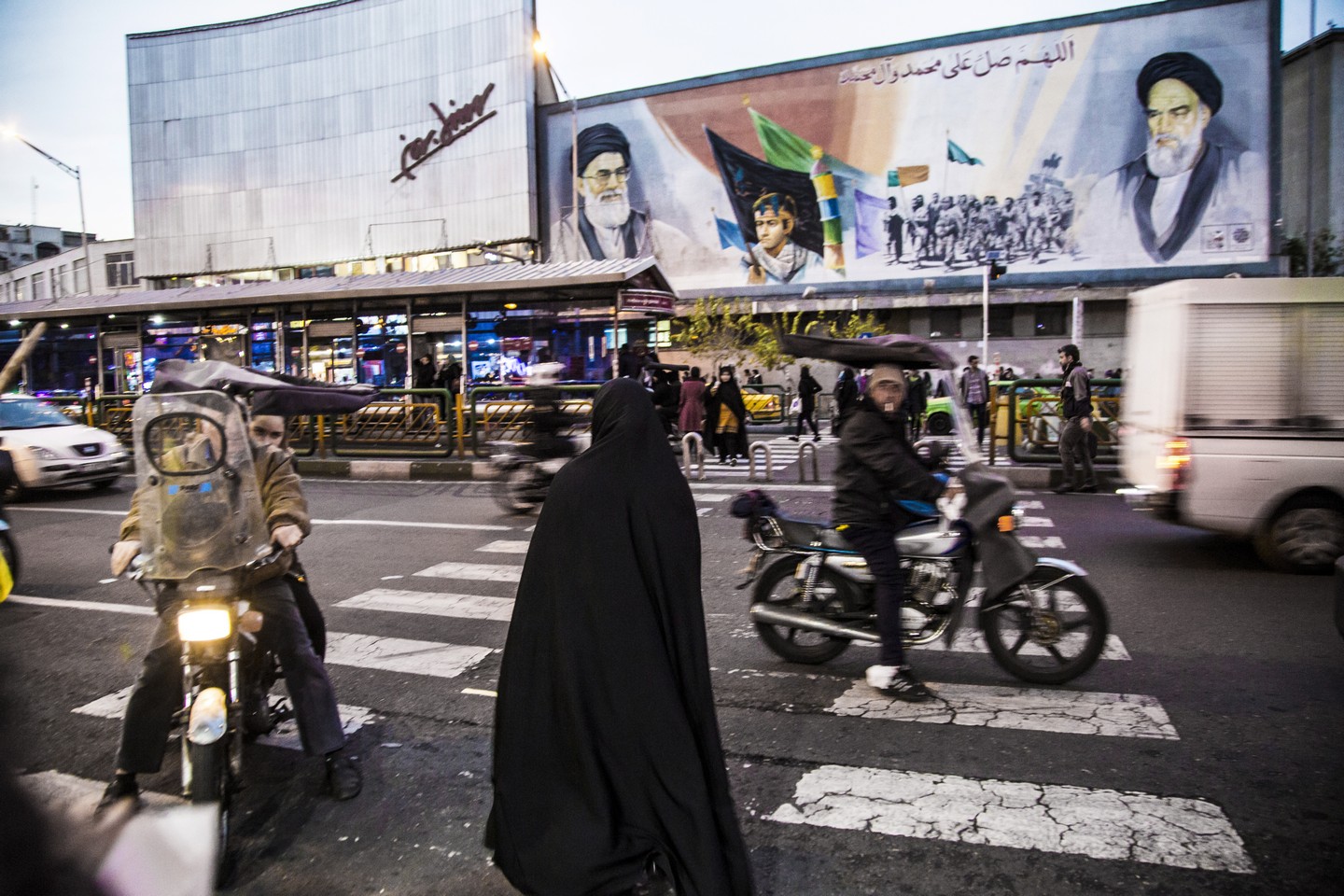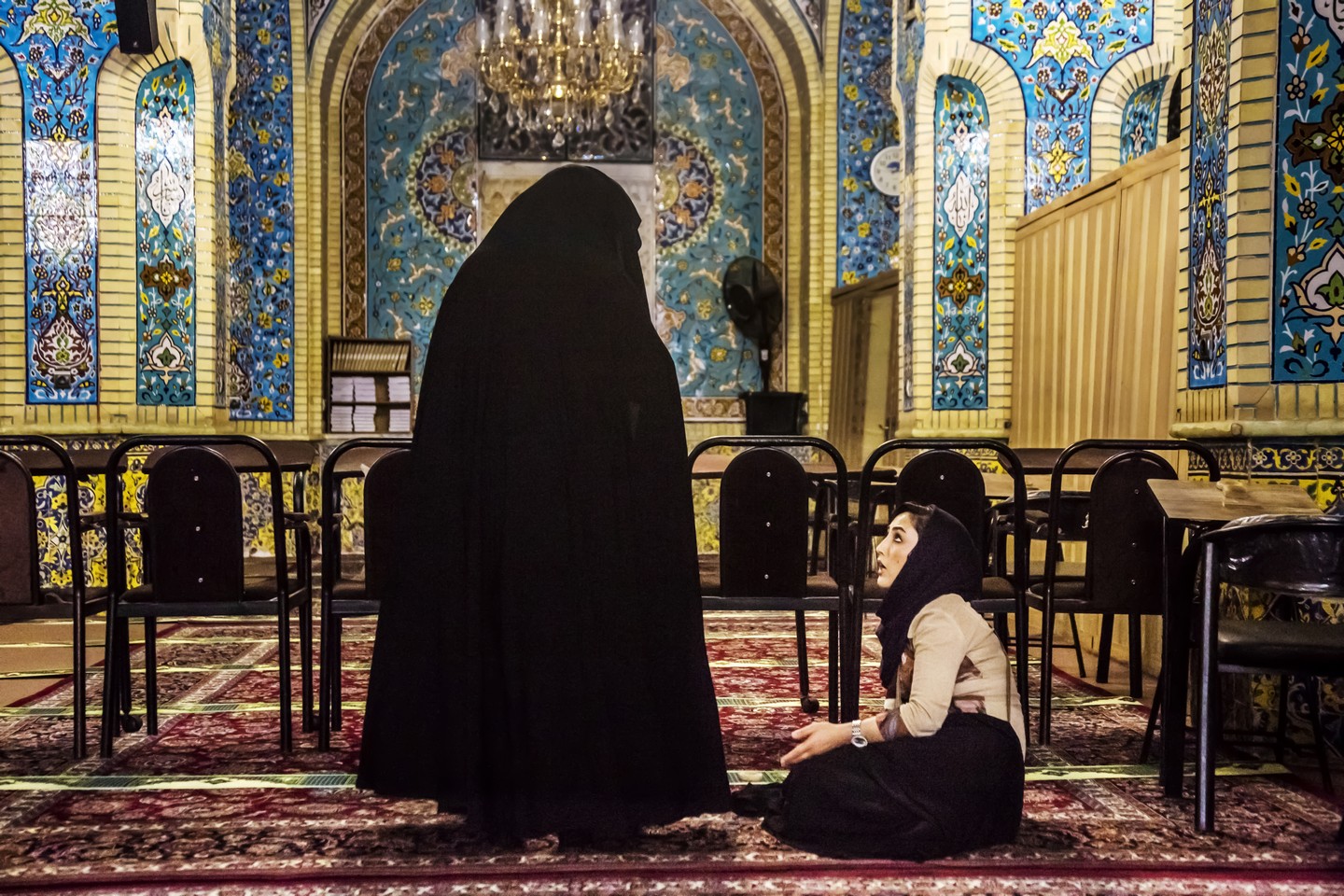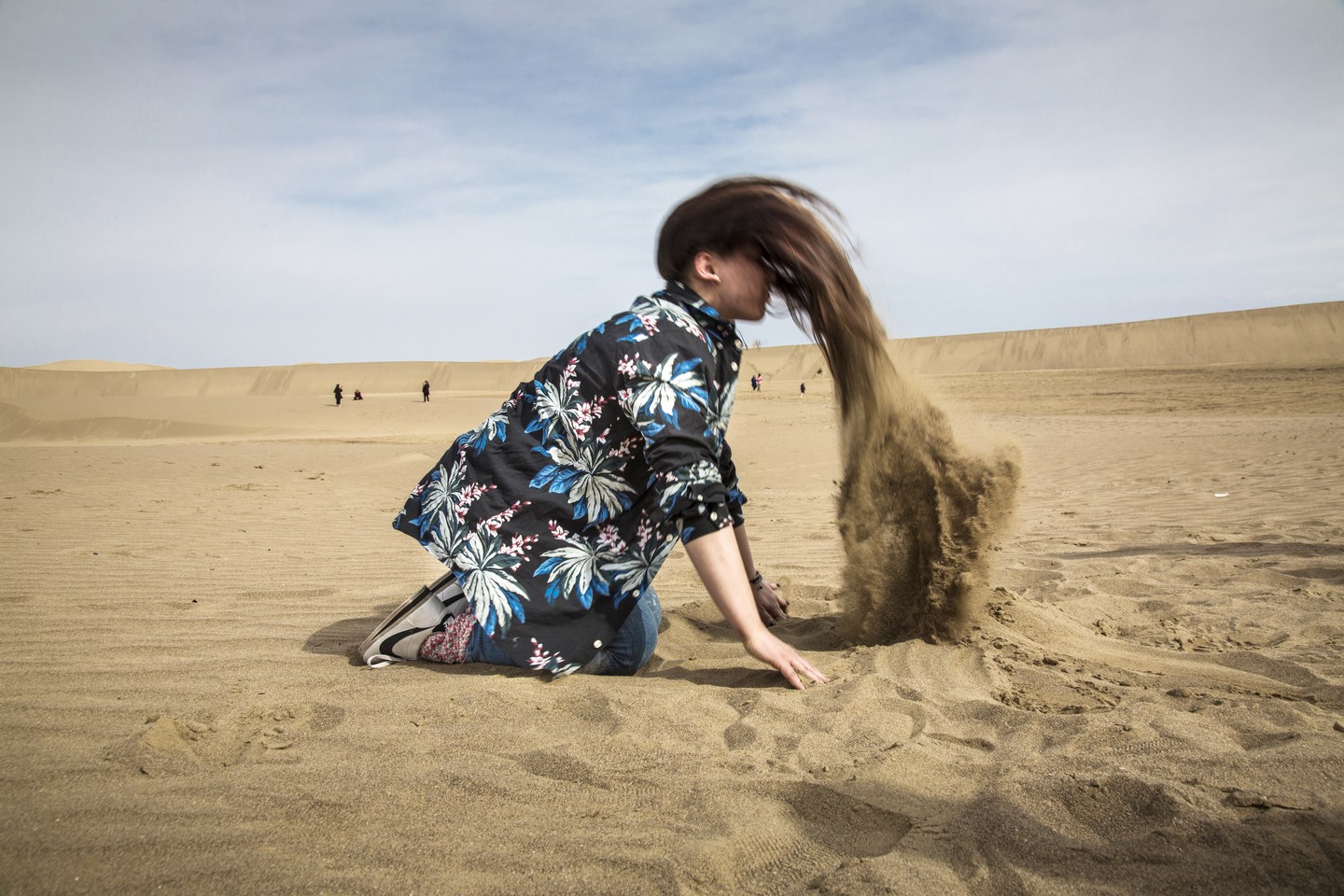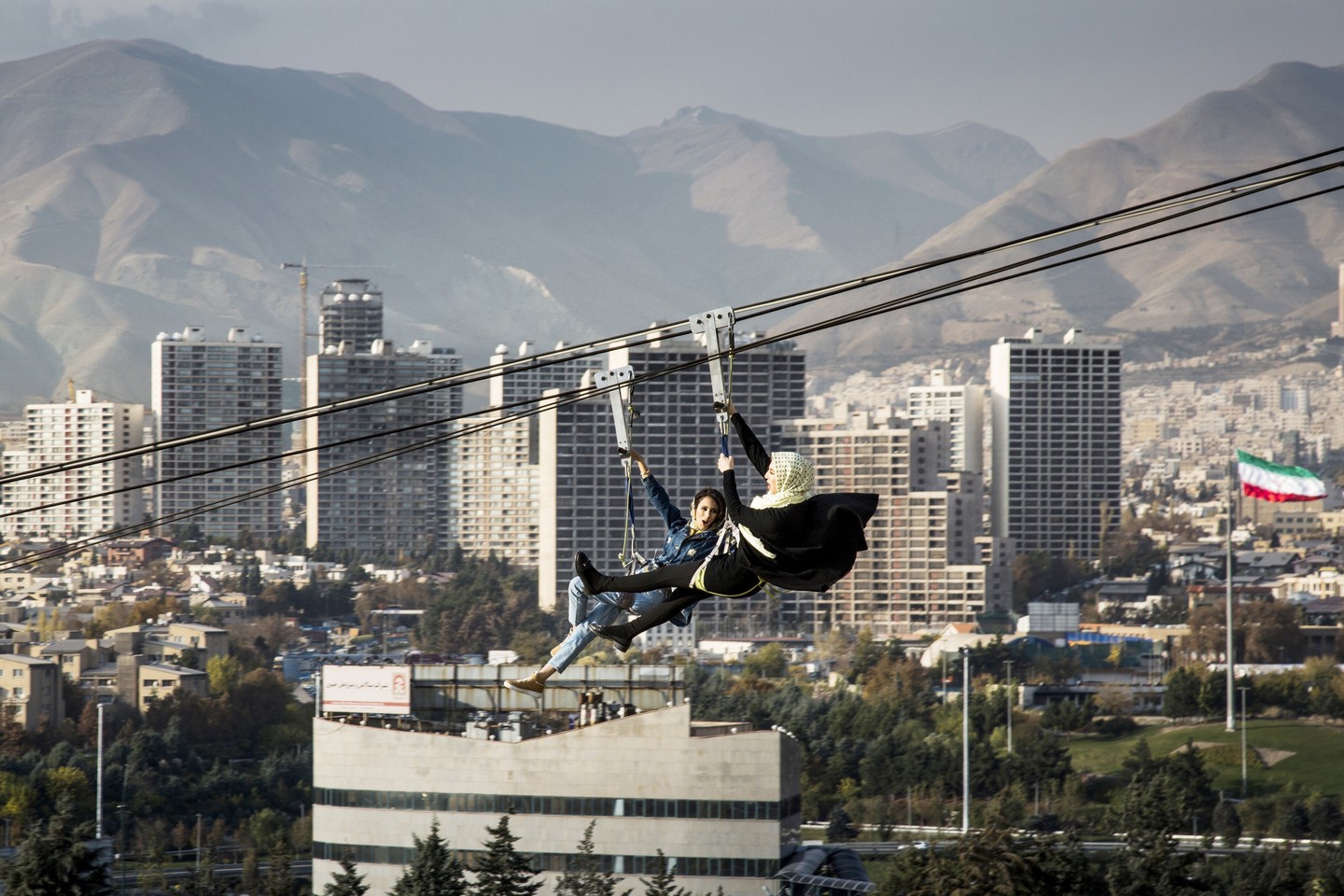Iran: Forty Years Under the Veil
Text and photos by Nuria López Torres
Abridged by Syharn Shen (沈思含)
Iran: Forty Years Under the Veil
Text and photos by Nuria López Torres
Abridged by Syharn Shen (沈思含)

Protests against the compulsory hijab have taken place on Enghelab Street (Islamic Revolution Street) in Tehran.
The repression that the compulsory hijab represents was exercised against 22-year-old Mahsa Amini last September 2022, which led to the death of the young woman at the hands of the morality police for not complying with the Islamic dress code—wearing tight trousers and not wearing the hijab correctly. Her death sparked an unprecedented wave of protests across Iran and was the last straw for a large part of Iranian society that has been living in the darkness of a repressive regime for 43 years. The fight against the hijab is a direct challenge to the power of the Iranian regime.
The model that originated from the Islamic revolution in 1979 was an experiment in which religion, in this case Shia Islam, tried to mould a society under the aesthetic, behavioural and ideological canons professed by its leaders—mostly men and all of them religious. These religious leaders made a series of modifications to Iranian law that determined that men and women do not have the same rights in cases of divorce, inheritance, murder and so many other aspects that govern people's lives. "In my case, it was not difficult to get my husband to sign the divorce papers, but afterwards, no one could force him to do what he had promised. That's how the law works here," says Nilufar Teherani.
The worth of a woman's life became half that of a man's, and her life was destined to remain under the dominion of the male world. And while a woman can specify her rights when it comes to marriage, if the man refuses, it is almost impossible to force him to comply. "I don't think the people who took to the streets to fight for the revolution were there to seek to impose the wearing of the hijab or to force women to act in a particular way, as happened later. This came as a surprise to all of us," explains Teherani, who was 19 when she was part of the huge movement to overthrow the monarchy of Shah Ali Reza-Pahlevi for more social equality and independence in the international arena, but not to subjugate women and undermine their rights.

A mother talks with her daughter in the mosque of the Grand Bazaar in Tehran.
More than forty years after that revolution, the laws have not changed, but society has changed considerably. A country of over eighty million people today, Iran is in the midst of a transformation process that breaks with all concepts of the black-tinged Islamic Republic with which it was identified during the first decades, when women were obliged to wear not only veils but also trench coats in neutral colours, such as black and dark blue.
Since the establishment of the Islamic Republic, generations of women have been breaking down barriers by putting on make-up, painting their nails, pulling up their trench coats, playing music in the streets, and riding bicycles or motorcycles. But, it was not until recent years that the act of letting their veils fall back until their heads are uncovered, or covering just a tiny part of their hair, has become an act of resistance, of feminist struggle and of demanding greater freedom for women. This is becoming increasingly common not only in the wealthier areas of Tehran, but also in all sectors.

A young Iranian woman plays by burying her hair in the desert sand while a friend records the slow-motion sequence on video. This game, which in other parts of the world would have no relevant meaning, takes on a sense of rebellion in Iran that reflects a political act—a declaration of intent of this young woman sending a message to the world by digging up her hair from the sand and freeing it.
The movement to drop the veil began in 2018 and became known as the Girls of Enghelab protests. While many of the women who protested were arrested and punished for their actions, their initiative motivated thousands more women to defy the norms. Increasingly, when women are arrested or reprimanded for the way they dress, society reacts to protect them. Many of these events have been recorded in videos and spread on social media, especially by the campaign—My Camera is My Weapon—launched by exiled Iranian journalist Masih Alinejad.
Despite the laws against them, Iranian women are the ones who are exerting the most pressure on the regime to push for change. They are not willing to give an inch in the pursuit of their rights and dreams. In Iran, feminist movements have existed for many years, and while the movements have previously been more silent and underground, the new generation of women today are not afraid of the archaic and repressive system of the ayatollahs. "When you have nothing to lose, you lose your fear," says Iranian sociologist and psychologist Parinoush Saniee, who has been living in exile for years. For the thousands of young women who have gradually lost their fear of dropping their veils, "Women, Life, Liberty" has become the slogan for these courageous women of Iran.

Two young Iranian women jump from a zip line at the Milad Tower in Tehran.
Contact Us | Plan a Visit | Donate
8 Lide Road, Beitou 11259, Taipei, Taiwan
886-2-2898-9999
005741@daaitv.com
©Tzu Chi Culture and Communication Foundation
All rights reserved.
